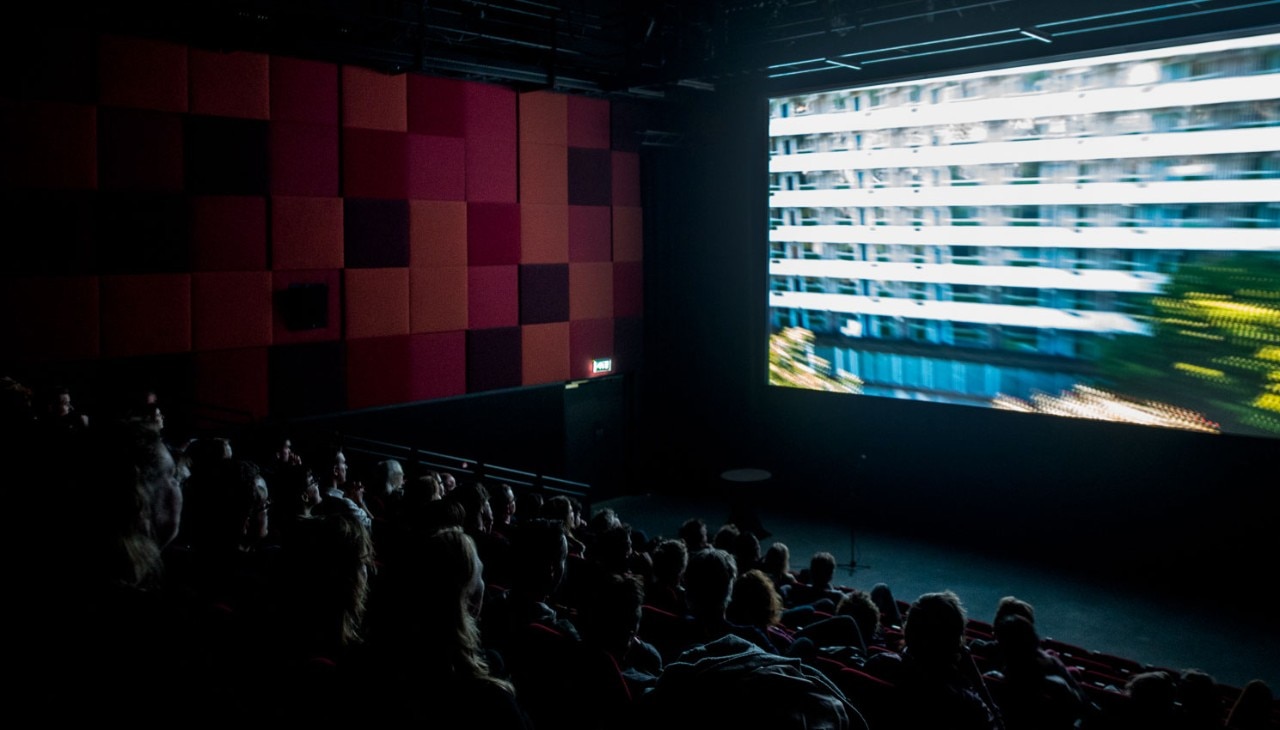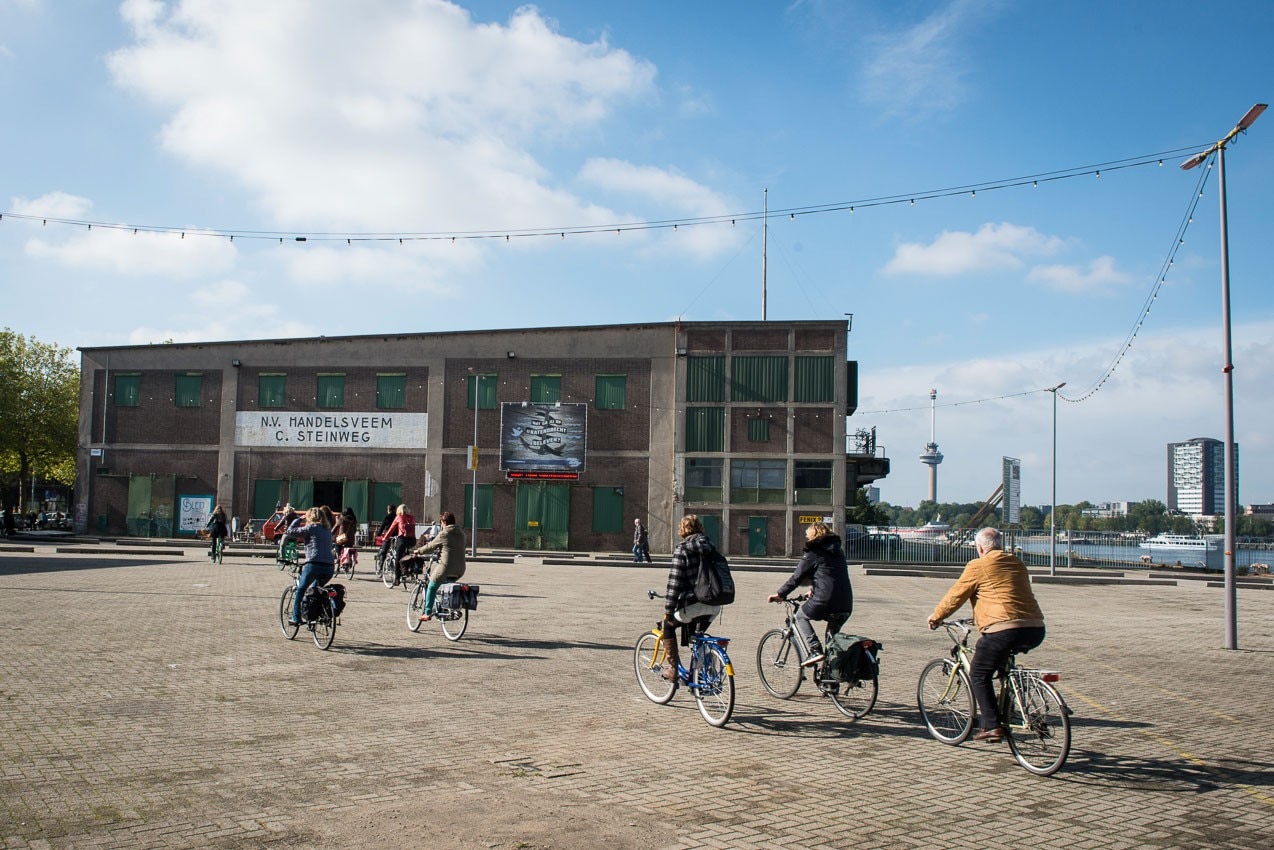
The event took place in Kop van Zuid, a stretch of land right in the middle of the Maas river, a place whose recent cultural renaissance makes it a good representative of the city’s changing spirit.
It used to be a sketchy harbour area, right by a red-light Chinatown, but since the 90s the vibe has switched to embrace newcomers such as hotels, cultural venues and Japanese restaurants. Now Kop van Zuid is home to Art Rotterdam, the city’s yearly contemporary art fair, and Hotel New York – a charismatic building that used to be the Holland America Line headquarters, and more recently turned hermitage of choice for local pop star Anouk, while she was writing her homonymous album.
The modern spaces of Lantaren Venster, a legendary theater and concert hall that was in the city center up to 2010, hosted the event.
As you’ve probably figured out, in this neighborhood the time machine was already in action before AFFR came.
Among several other urban redevelopments, South Rotterdam’s own transformation was itself discussed in Rotterdam 2040 (2013), one of the most interesting documentaries shown this year (if anything for its frantic editing and omnipresent irony).
The film narrates the city’s continuous growth through author Gys La Riviére’s own impressions of it throughout his life. According to the visual artist, who explored its urban fabric extensively for years as a skater, Rotterdam is one of the few cities in the world to always keep its citizens future-oriented, dragging them in a slow yet unstoppable evolution. Mixing personal experiences with more elaborated opinions on urbanism, the artist jumps from local rappers’ fascination with the Weena skyscrapers to Japanese metropolises as a virtuous example of vertical growth for the city’s own Central District. Even though non-Rotterdammers wind up lost with all the hyper-local references, the director’s own emotional investment in the topic (informed yet often provocatively naïve) is something to encourage.
While La Riviére shows us the Dutch city as a time machine, often disrespectful of historical heritage and architectural aesthetics, the Chinese Zhao Qi tells a very different story with his Fallen City (2011).
Without any voice-over or graphic elements, the director follows the lives of a few citizens of Sichuan, a Chinese city devastated by an earthquake in 2008. A woman who lost her husband struggles to transmit some enthusiasm for studying to her lazy son, another is forced to go to Shanghai to work, someone else thinks the only reason they have to live is taking care of their sick mother. There are many images of rubble and of the hastily built, modernist housing blocks that came to replace the old city (in which finding an apartment is literally a lottery, and people get jailed for cheating), but we catch many a glimpse of everyday human efforts to carry heavy burdens with dignity as well.
Tragedy and personal histories also cross paths in Mendelsohn’s Incessant Visions (2011), a biopic about the visionary architect from Berlin whose expressionist, curvy balconies marked modern Jerusalem so much.
Written and directed by Duki Dror, the movie is based on sketches and letters as much as on interviews and official documents. The resulting portrait depicts a man who was a creator before anything else, to whom materializing his visions and sharing them with the world was an absolute priority. All while his life was surrounded by private events (his wife’s betrayal) and historical events (World War II) that were anything but light.
The perception of architecture is always a travel through time in a way, as compelled as we feel to judge the shapes and reasons of the past, and unsurprisingly utopia and modernism were recurring themes across the festival.
Drop City (2012), by Joan Grossman, tells the story of an artist commune that, in the 60s, fled to an isolated area of Colorado to build a village that drew inspiration from Buckminster Fuller’s geodesic domes and the time’s idealistic notions of freedom. If nothing is left of that experiment now, the modernism described in Modern Tide (2012), a film by Jake Gorst, still represents a vision of life that – albeit fading – has definitely left a mark somewhere close to the Big Apple.
The documentary focuses on Long Island as an experimental ground for a modernism that was markedly different from the international style encountered in California. The East End of the island has in fact a much more rustic and less luxurious mood than the villas documented by Reyner Banham and celebrated by David Hockney. With a linear documentary approach, Gorst presents the movement’s defining characteristics by interviewing architects, architecture historians and even tenants.
The time machine, we were saying. For those who missed the festival, a mini-revival will take place on October 26 and 27 in Groningen and Heerlen, while the others can always take a look at AFFR's growing online database.


